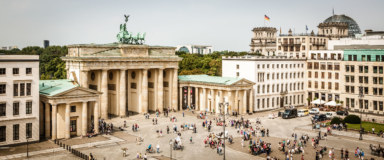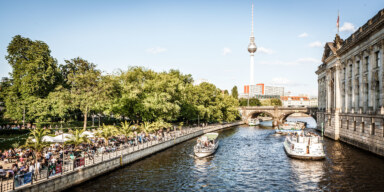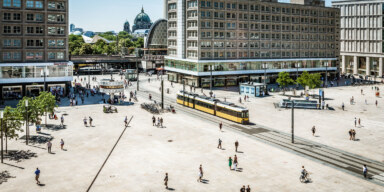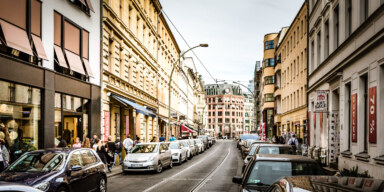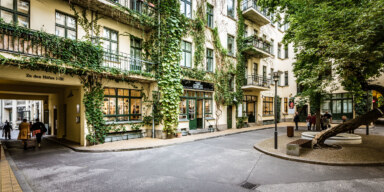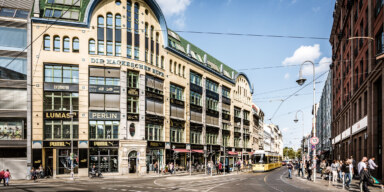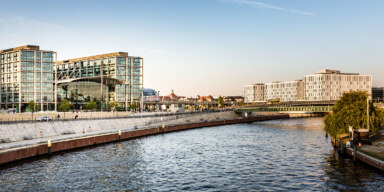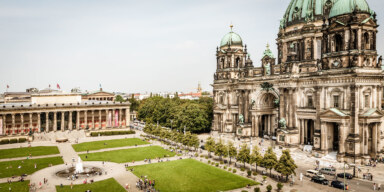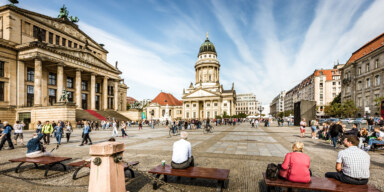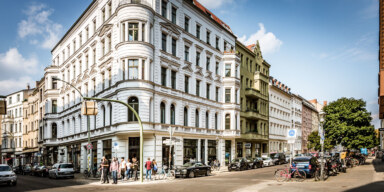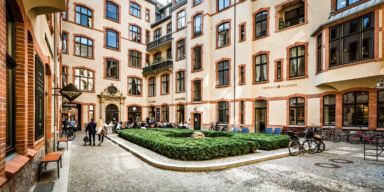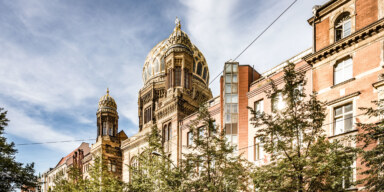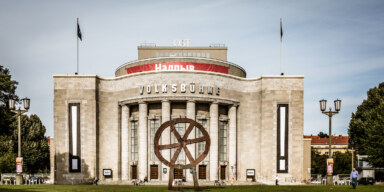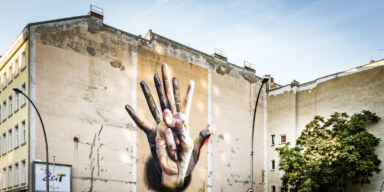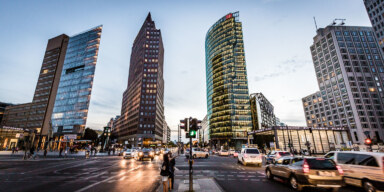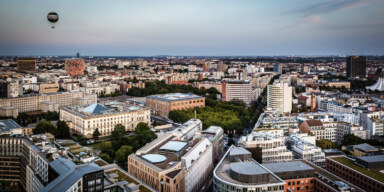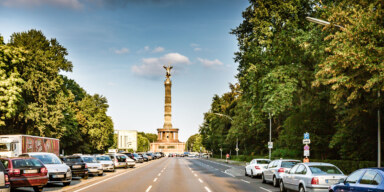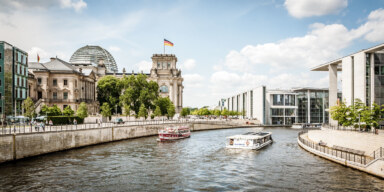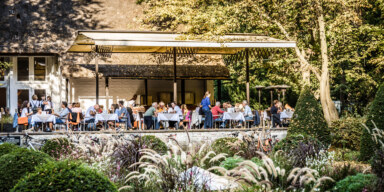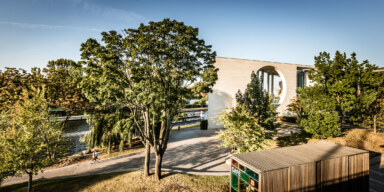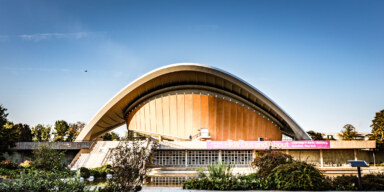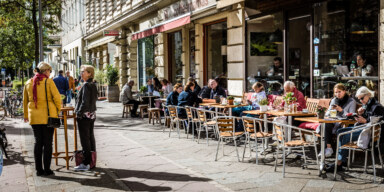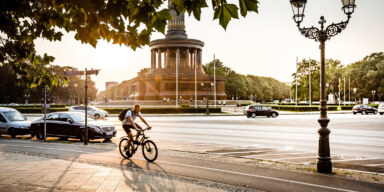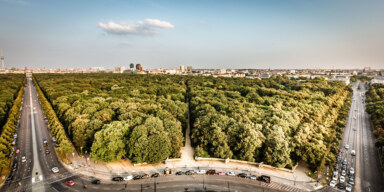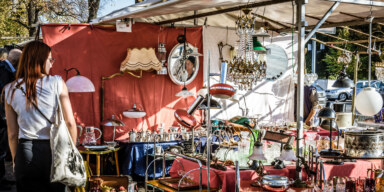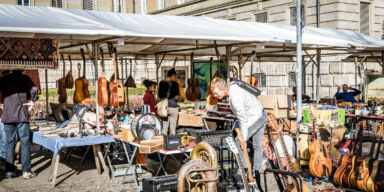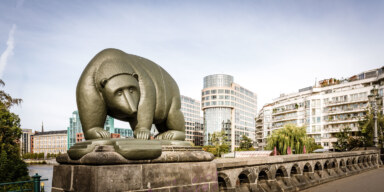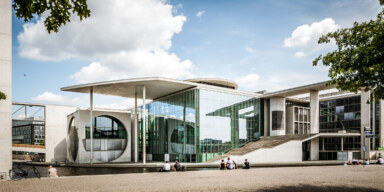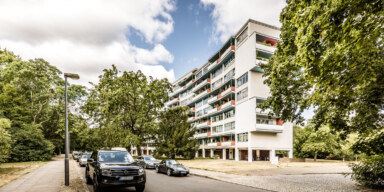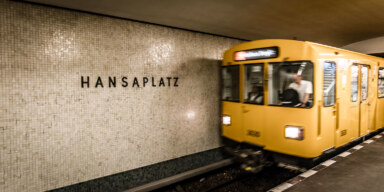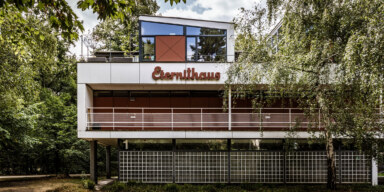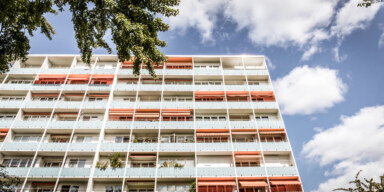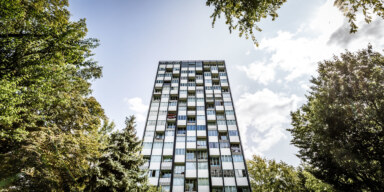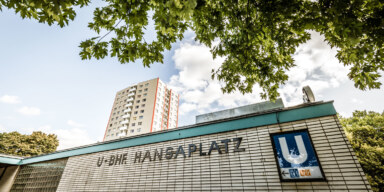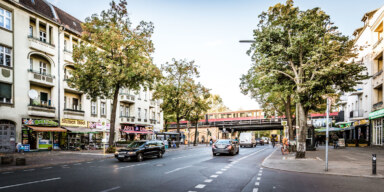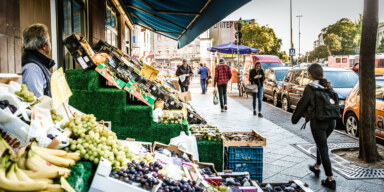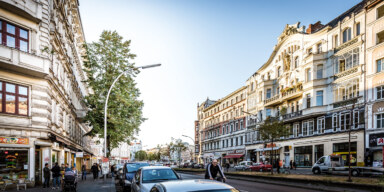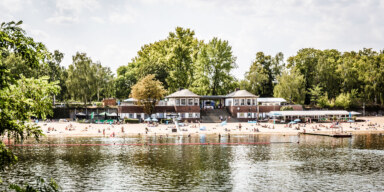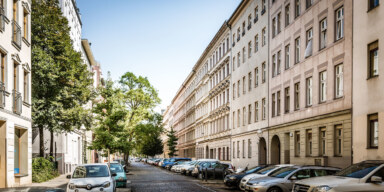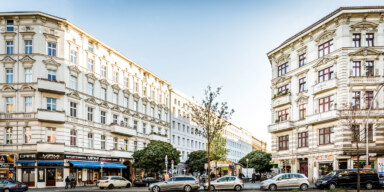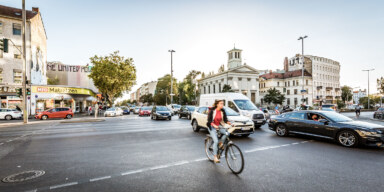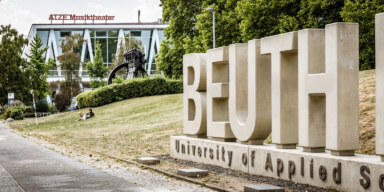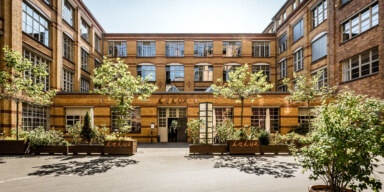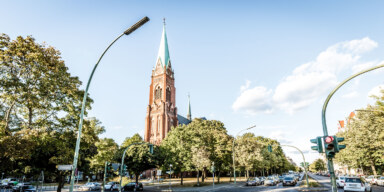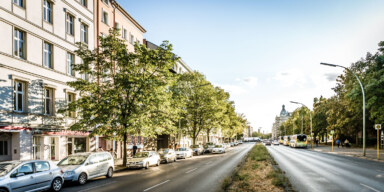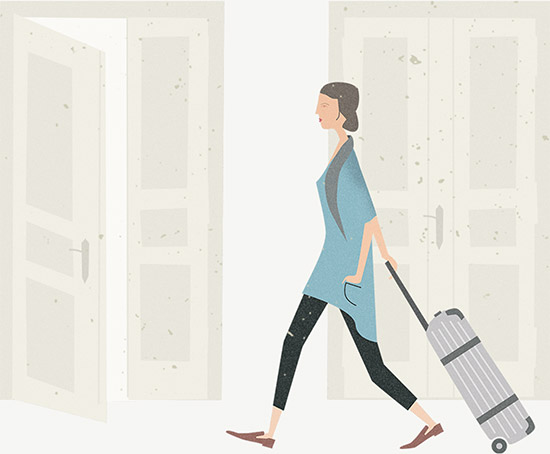Mitte
The cosmopolitan one
The glorious centre of it all: premier addresses in a world city. People promenading along Unter den Linden, posing before the Brandenburg Gate, attending lectures at Humboldt Uni, shopping in Friedrichstraße, enjoying art and culture on the Museum Island and Gendarmenmarkt, applauding at the Staatsoper, hanging out at the Hackesche Höfe. Berlin is the ‘place to be’. London, Paris and New York are showing the first signs of envy.
Friedrich Engels’s famous line still applies: “Rebuild the whole place from top to bottom and you might make something decent of it.” Berlin is constantly rebuilding itself, every day, everywhere. Even the Stadtschloss, the old city palace, is celebrating its resurrection: the Humboldt Forum. The city changes its face by the hour, re-inventing itself non-stop. Nowhere can this be felt more clearly than in the central district, Mitte.
Beating even the highest construction cranes is another Berlin landmark, the television tower on Alexanderplatz. A genuine high-light of the city, built in the Sixties. Up there, at a height of 55 metres, everything revolves around Berlin. Or at least the restaurant does. Like a space capsule, it orbits around Berlin in 60 minutes. In the evening, the views are magnificent when Berlin is immersed in a sea of light and you get a sense of its vastness.
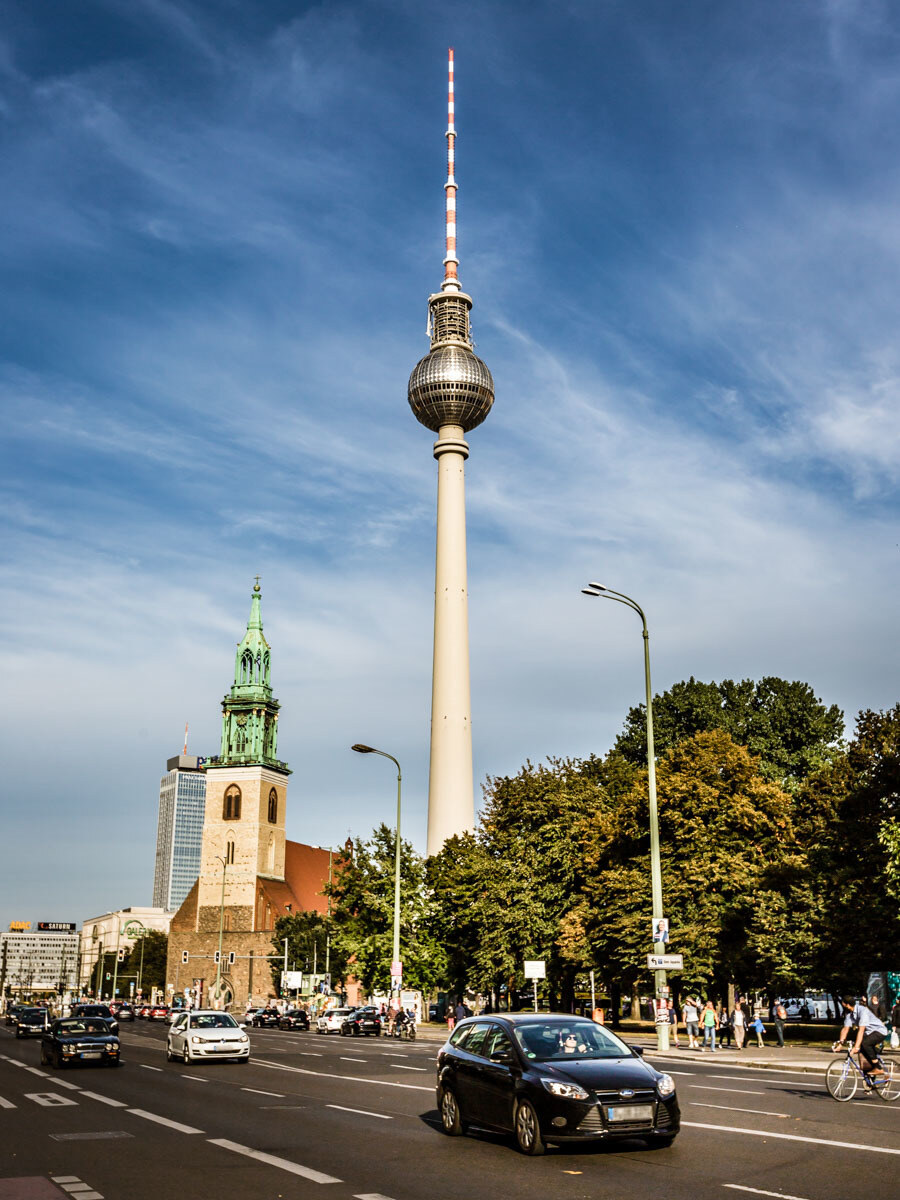
» Shabby chic as a statement of the unfinished. Concealed between graffiti and building-site scaffolding, in the third inner courtyard you will find a top-notch eatery. «
A big city like Berlin may leave a newbie feeling lost. Therefore, find yourself some favourite locations that will restore your confidence: a breakfast café, a museum, your favourite Italian round the corner. ‘House of Small Wonder’ might just be such a place. A piece of New York right next to the Friedrichstadt Palast. An amazing place to have breakfast or brunch. Once you have ticked off all the obvious tourist attractions, Berlin will show its real face. Only then will it become “my Berlin”.
One of the most fascinating addresses in Berlin is Torstraße. Where until the century before last there used to be a toll gate to keep out smugglers, today’s Torstraße has turned into a mile-long magnet for lovers of art and design. Away from mainstream retail, it offers contemporary art in bare white rooms, cool cafés and unconventional shops, of which there is a looong list. Shabby chic as a statement of the unfinished. Concealed between graffiti and building-site scaffolding, in the third inner courtyard you will find a top-notch eatery. The chairs are wonky, but just wait for the food…
Berlin is all about fashion from across the world. A place called “International Wardrobe” sells a tempting range of folkloric fabrics, patterns and costumes from Romania, Cambodia, Vietnam and Laos. An extravagant mixed bag. Only Berlin is this colourful.
And number 1, Torstraße, is a number one indeed: Soho House. It’s members only. Turns into a hotspot when the likes of George Clooney are in town, attending the festival or shooting a film. It acts as a hotel, concept store, café, spa, and private club all rolled into one. Berlin’s creatives meet in the club restaurant to network or chill out. English is the official language. Berlin Mitte at its best.
Art lovers, fashion aficionados and gourmets congregate in and around Augustastraße. A private view at the “me Collectors Room”, fresh colours at Eigen+Art – this is where art really happens. Another legendary place is Clärchens Ballhaus, a well-worn dance hall with a turbulent history, and once the most popular dating club in East Berlin.
If you feel peckish, try the canteen of the Berliner Ensemble theatre. It serves meat balls and Currywurst until midnight, even to non-actors. Expect some inspiring conversations. You may even run into – no, not Bertolt Brecht but another dramatist: Rolf Hochhuth. He owns the entire house.
Speaking of which: Mitte has a lot to offer in the way of houses and apartments, ranging from your classic stucco- façaded buildings with wrought-iron balconies to grand town houses with a roof garden, to genuine lofts. The choice is impressive, and so are the rents. But obviously chic and cool has its price.
» Friedrich Engels’s famous line still applies: “Rebuild the whole place from top to bottom and you might make something decent of it.” Berlin is constantly rebuilding ... «
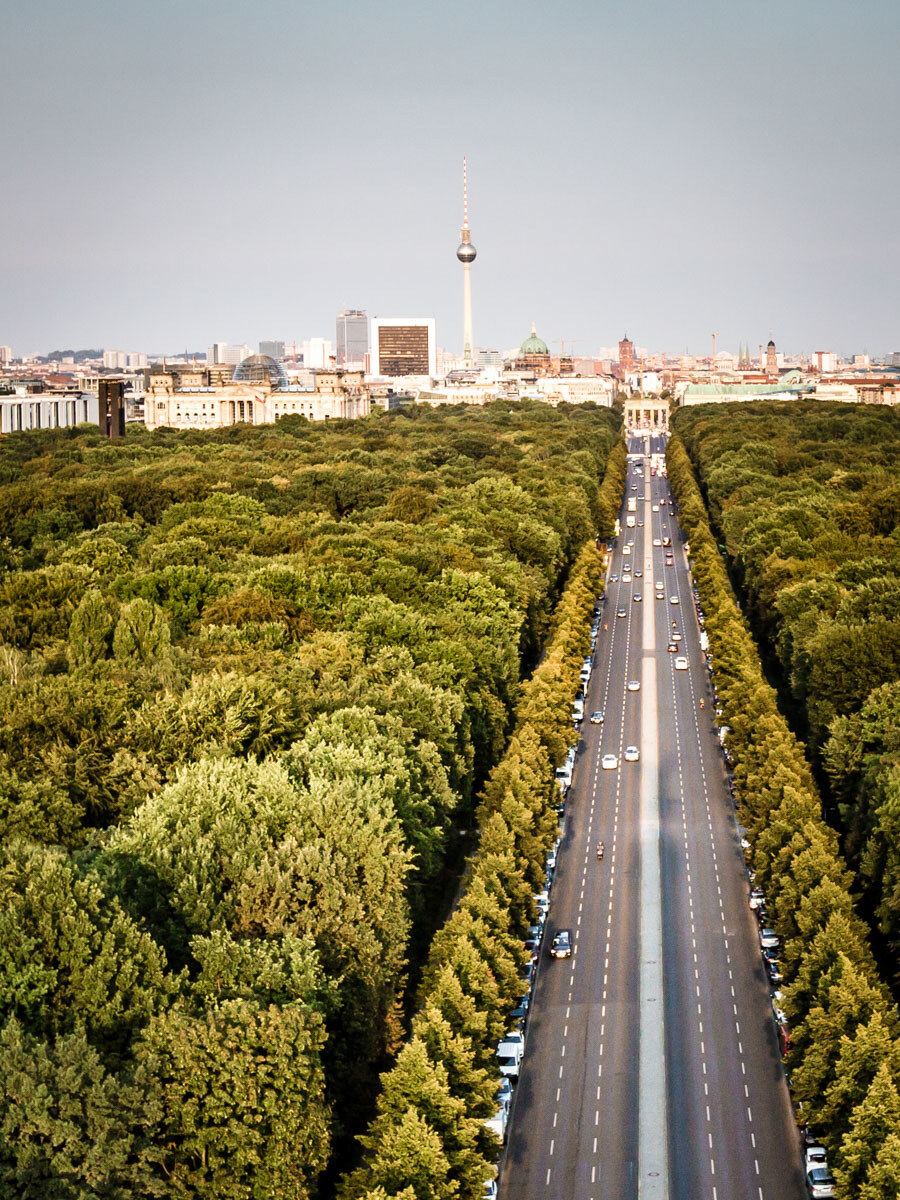
Tiergarten
The evergreen one
Tiergarten – the name, to a newcomer, sounds like lots of wildlife. And rightly, as this is the government precinct, a place teeming with the nation’s ‘top guns’. And there is, of course, the zoo, recently turned iconic by the arrival of little Knut the polar bear, who conquered the hearts of the nation in a flash. A feat that has seldom been achieved by the politicians.
Residents here live in the middle between the eastern and western city centres. Streets overlooking the River Spree are particularly popular. Living on the waterfront. More and more nice shops and restaurants are popping up in and around Kirchstraße. Ramshackle old buildings have been rehabilitated, but rents are still moderate. The proximity to Berlin’s Technical University and good transport connections into Mitte make this neighbourhood increasingly popular.
Measuring three kilometres in length and one kilometre in width, Tiergarten looks like a green island on Berlin’s city map. At 2,000 hectares, it is six times the size of New York’s Central Park. Up until the middle of the 18th century, it was the hunting ground of the Prussian Princes. Today it is a place where stressed-out city dwellers stretch out on lovely lawns or amble along a wide network of pathways.
Nearly every inch of Berlin has its history. The Gedenkstätte Deutscher Widerstand – German Resistance Memorial – in the Bendlerblock complex on Stauffenbergstraße is a reminder of the execution of the fearless men of the 20 July Plot who attempted to assassinate Hitler in 1944.
At the Lichtensteinbrücke acoss the Landwehrkanal, a plate of massive cast iron appears to be sliding into the water. Written in rusty capital letters onto the oblique surface is the name of a passionate revolutionary: ROSA LUXEMBURG, who, like Karl Liebknecht, was murdered in cold blood in 1919. The memorial marks the spot where her body was thrown into the canal. It was not found until months later.
A famous and very talented landscape architect gave Tiergarten its face: Peter Joseph Lenné. The Berliners nicknamed him “Buddel-Peter” – digging Peter. Small streams bring life to extensive lawns, and more and more diverse perspectives open up towards the Victory Column or the Bellvue Palace. Every step leads to a new surprise. Tiergarten is the place the Berliners use for their morning run or weekend walk.There is plenty of room for walking, cycling, picnics. The one thing that is prohibited is barbecuing. Those who desperately need a Bratwurst can get one at the Café am Neuen See, which is located in the centre of the Tiergarten and has been popular since the 19th century. Here you find students, tourists, mothers with prams, fathers without sports cars, busy managers and occasionally even Bundestag deputies. Moments of tranquility within the daily hustle and bustle. This, too, is eveyday Berlin.
» The one thing that is prohibited is barbecuing. Those who desperately need a Bratwurst can get one at the Café am Neuen See … «
Hansaviertel
The modernist one
Round Altonaer Straße and Hansaplatz lies the Hansaviertel. Located right next to the Tiergarten, leafy as well as central, it is a much sought-after residential area. The street names are a reminder that in the 14th and 15th centuries, Berlin – like Hamburg and Lübeck – was a member of the Hanseatic League, an early type of European economic community. The Hansaviertel was built by a Hamburg-based company in 1874 and almost completely destroyed during the war. Miraculously a few of the old houses were spared by the bombs and now form a stark contrast to the modernist residential development literally built on ruins and completed in 1957 for the International Housing Exhibition. It is an open-air museum of modern architectural history, with buildings designed by 53 architects from 13 countries. Geniuses like Max Traut, Egon Eiermann, Oscar Niemeyer, Alvar Aalto and Arne Jacobsen. The flats offered by coming home strike a chord not only with the lovers of modern architecture. Studio apartments, two-storey maisonettes with a view of the Victory Column, single-dweller apartments of a remarkable floor-plan design. Those who fancy living in a listed monument and enjoy bringing back the feel of the Sixties, are in just the right place here.
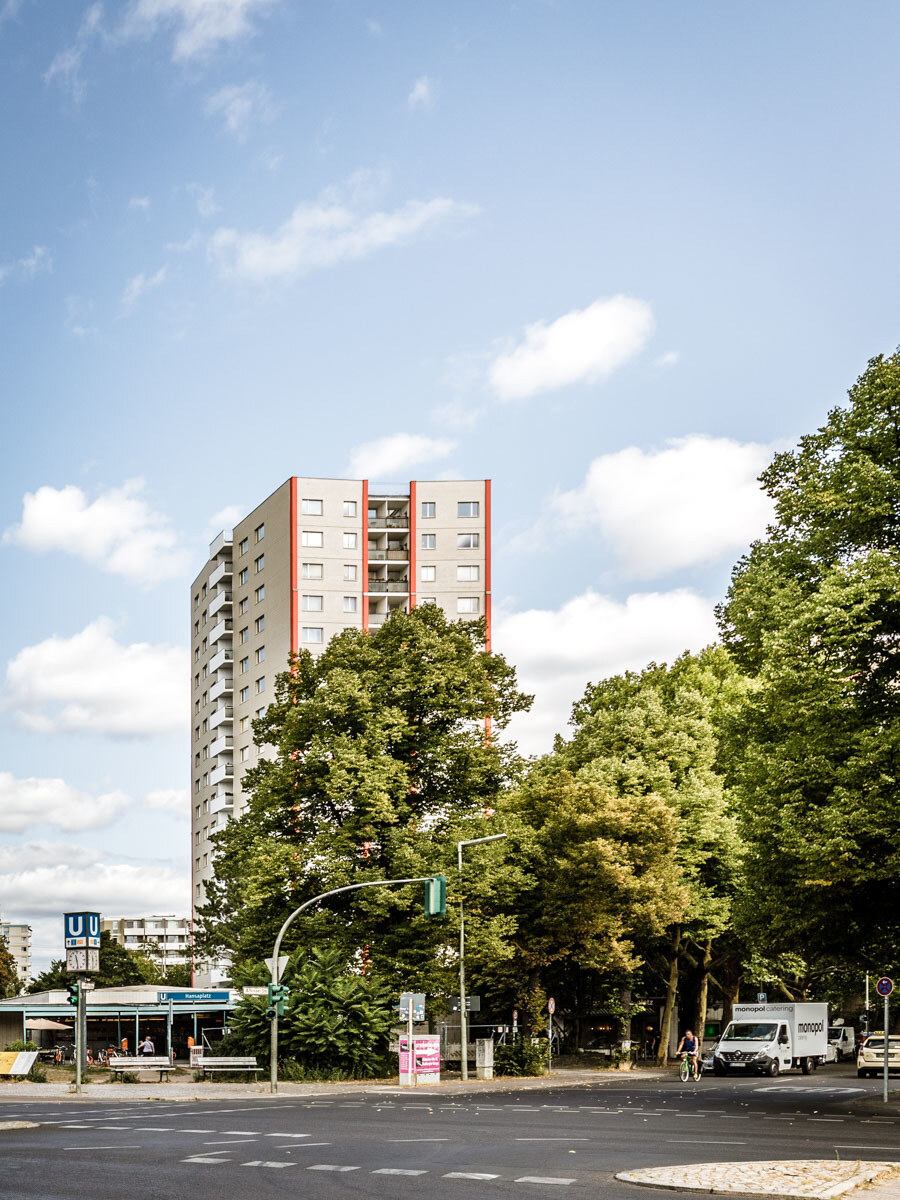
» An open air museum of modern architectural history, designed by 53 architects from 13 countries … «
Equally fascinating and a symbol of the post-war reconstruction period is Berlin’s former Congress Hall, America’s avant-guard entry to the International Housing Exhibition. Berliners, of course, instantly came up with a nickname: the “pregnant oyster” – conceivably because of its rather daring roof structure, which famously collapsed in 1980. Today, this architectural highlight on the River Spree is an international exhibition hall and cultural centre called “Haus der Kulturen der Welt”.
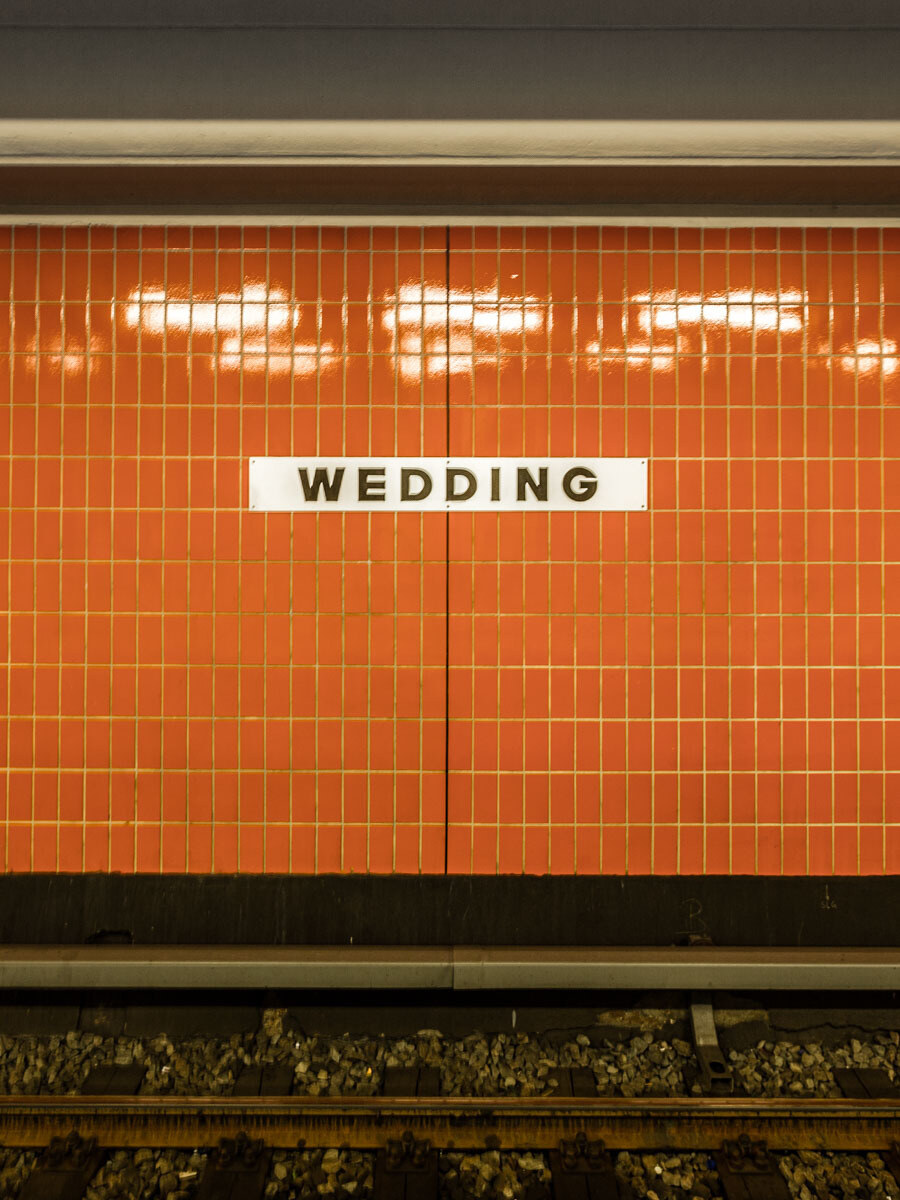
Wedding
The varied one
An area of disruption and radical transformation: This is where native Berliners rub shoulders with the rest of the world. People from the most diverse cultural backgrounds living side by side. And they can even afford the rent. For now. Little by little, the former working-class area is being discovered by the creative arts scene and is undergoing rapid transformation. Certain guidebooks even liken it to Brooklyn, enthusiastically referring to it as Wild, Wild Wedding. Featuring affordable lofts and studio apartments, the district is highly attractive for artists, students and entrepreneurs with an income that is … erm …volatile …
Housing in the area is varied: fully refurbished old buildings next to some rather dull social-housing estates and a number of developments from the late Eighties which may not be very attractive, but are offered at affordable rents. Public transport is very good, and thanks to the district’s central location it is easy to get from there to Prenzlauer Berg or Friedrichshain. Only five stops to Alexanderplatz.
Wedding is surprisingly green and relaxing, with Humboldthain, Volkspark Rehberge and Plötzensee.
Native Berliners and newcomers alike spend early evenings in a pub round the corner like “Beim Dicken“. A beer is 1.20 and the barmaid with the deep voice serves up the official Germanic snack, potato salad and sausages. Wedding is crude, and it is here that you come across the genuine, blunt Berlin dialect and humour known as “Berliner Schnauze”.
Until German re-unification, the wall cut the area into two parts. A particularly dramatic interface between the two Germanies was Bernauer Straße with the row of houses belonging to the east and the pavement to the west. In a bold, last-minute effort, an 80 year-old woman jumped out of her second-floor window into the west Berlin firemen’s rescue sheet – and survived.
Hardly an escape method was left untried. A miniature submarine, converted car boots, even a tiny BMW Isetta bubble car with its heating and battery taken out. And again and again, tunnels were dug. A memorial shows the longest one in town, “Tunnel 57”, 145 metres long, connecting an East Berlin back yard with a West Berlin bakery. It led 57 refugees to freedom.
To find out more about Berlin below ground, visit the Berliner Unterwelten-Museum at the Gesundbrunnen underground station. Take part in an exciting guided tour to see abandoned bunkers and disused tunnels. Or the Mauermuseum on Checkpoint Charlie: a display of German-German history with a selection of equipment used by GDR refugees during their getaway.
» Certain guidebooks even liken it to Brooklyn, enthusiastically referring to it as “Wild, Wild Wedding”... «
» Little by little, the former working-class area is being discovered by the creative arts scene and is undergoing rapid transformation.«
In the 19th century, Wedding became an industrial area. AEG, Schering and Osram became the biggest employers in the city. In the area surrounding Schillerpark, huge housing developments were built for the workers. Today the social housing estate from the Weimar Republic resembles an idyllic, leafy holiday home area. It was declared a UNESCO World Heritage Site in 2008.
Shopping opportunities in Wedding are excellent. Big department stores are in Müllerstraße, and organic fruit from Brandenburg is on offer at the weekly market. It all comes down to the mixture. What you can’t find at the shopping centre might be available in the second-hand shop next door.
Ever since the days of the Kaiser, premium spirits have been distilled by the „Preussische Spirituosen Manufaktur“. Made in Berlin: Artisan gins and vodkas produced using the original recipes.
Café Pförtner on the former BVG premises is worth a quick visit. In the old porter’s lodge there is always a crowd. The furniture is full of DIY charm, the homemade pasta is legendary, prices are fair. Gracing the garden at the front entrance is, of course, a disused city bus, serving as a lounge.
In other words: Royal Wedding!
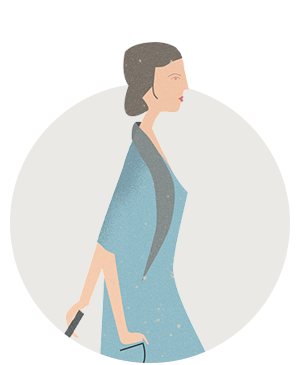
Renting an apartment – simple and secure
We at coming home will do our utmost to support and advise you. Our website provides you with a wealth of useful tipoffs for your apartment search, and tells you more about our free-of-charge services.
Infos for tenants
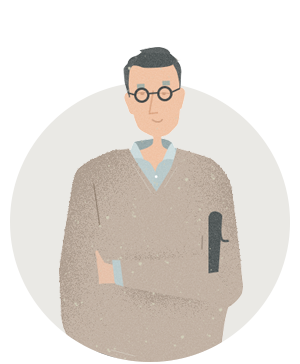
Secure lettings
If you wish to offer a furnished property for rent we are at your side throughout the tenancy process and ensure you get the best possible advice and support.
Infos for landlords

Magazine
Care to find out how other Berliners live? Read our series of personal home stories and get to know some extraordinary habitats and their creative residents in our magazine: “How people live Berlin”
Magazine
